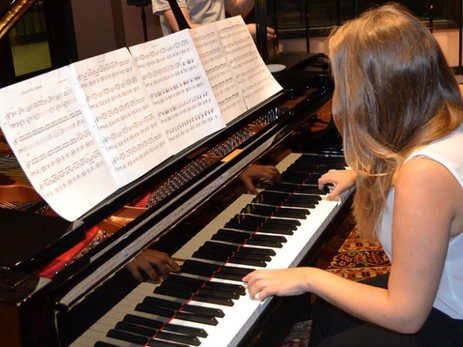Uncategorized
Complete Guide On How To Learn To Play The Jazz Piano
Learn all about progressions, jazz chord cycles, jazz piano theory, harmony and some tips with this thorough intro to play jazz piano!
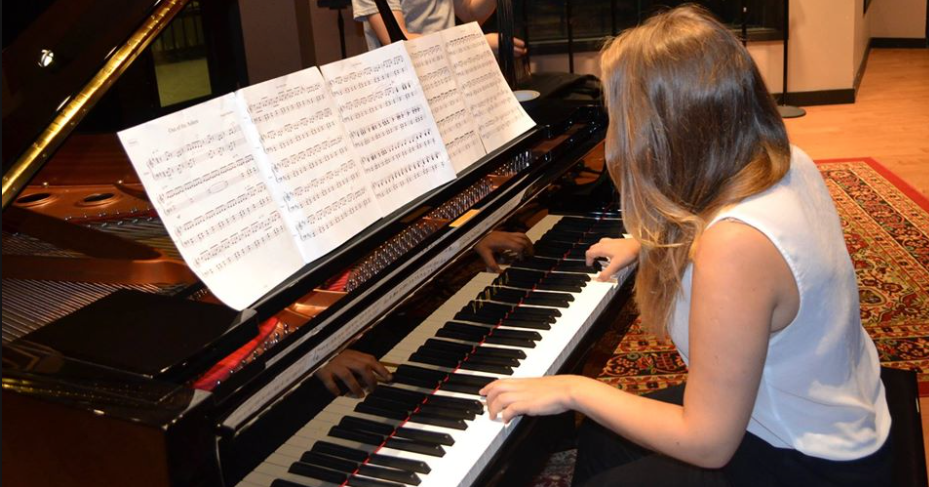
What do you need to start learning jazz piano?
Jazz piano for beginners. Characteristics of Jazz
With a few books, records and a proper plan, you can start practising at home. With some basic jazz chords and by learning the structure of your favourite jazz tunes, you’ll soon be able to improvise! Keep in mind that these are basic references and information that you can use to start. Later, you’ll complete your formation with every song or article you can find:
● “The Real Book” Jazz piano book (one of the best jazz albums with easy jazz piano songs and upper-level pieces too)
● “The Complete Collection, Miles Davis”
● A Practice Plan Piano Jazz: Learn to play jazz piano
STEPS -a piano guide-
1. Learn the New Technique:
Jazz consists of a different approach to reading and performing pieces, which highly opposes other musical genres such as classical, pop, baroque… Within this methodology, we voice to lead and build up the chords from scratch.
2. Gather Your Repertoire: Piano jazz chords
Starting with effortless pieces with little chords changes and bit by bit gather harder standards.
3. Understanding Your Harmony:
It is quite hard to jump over to improvise if we haven’t got the fundamentals clear. First of all, practice very well on the minor and major scales, get to know very well how they are related to each other. Also, learn about scales in different modes (Ionian, Lydian…) This will serve as an excellent base for further chord embellishments and melodic improvisation, which all jazz pianists tend to have.
4. Practice!
Start with 10 minutes daily. Level up each week.
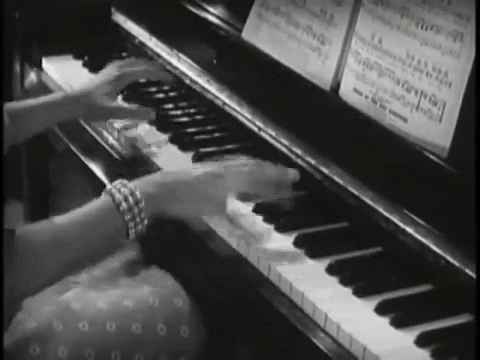
In order to understand this style, we have to know what it is precisely and what the aim is:
What is Jazz then?
Jazz is the universal language that originated from African Roots music, such as the blues and bluegrass. It is a developmental music genre in which phrasing, communication and melody innuendos take place. As well as in harmony, Jazz differs profoundly from other musical styles. Therefore it is imperative to get a full and complete understanding of its language. We will challenge various themes, patterns and chords progressions changes.
The more we identify with it and listen to it, the better grasp we will get at this wonderful taste.
AIM:
– Communication
– Conversation
– Creation
Tips for approaching a new piece
When you’re studying a new tune, take into consideration these aspects of it:
1. Melody
2. Chords
3. Improvised Solo
4. Altogether from the top.
1- Play the melody within four chords.
Get to know the phrasing and if you still challenge in creating a smooth pattern, then keep working on the same motion pattern until you are fully confident with it.
2- Make a list of memorized standard jazz songs that you like and create your repertoire.
The best way to learn jazz piano is by listening to the genre and play the songs that you like. With these pieces, look at the chords and try to figure out if there is a typical pattern, repeated sections or if you can see the most famous lick: II – V – I.
You can attend jam sessions and concerts as many as you like so that you can get a better understanding of your hearing. Ear training plays a big role in this material.
3- Improvisation is the key, start trying to compose and experiment with your own sound.
The key to having a successful composition is to always create a melodic line within the key.
That is the most important aspect, later once you are fully secure in playing around your harmonic range, start to go beyond and introduce accidentals, rhythm and phrases.
4- Now that you have completed the cycle start to mix it all and bit by bit keep adding new textures, chord activation and more accidentals.
Think of the best possible ways in which you can improve your spotlight. Your melody has to be unique.
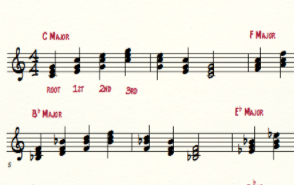
Easy jazz piano
HARMONY:
Jazz chords piano
Jazz harmony is how chords cycles are used in jazz music. Harmony is a language in which all chords are playing another significant role in this genre.
The harmony indicates where we are starting from, where we want to go and where will we end. Therefore it is essential that you really get very well the intention and the tricks of getting a successful “road map” of harmonies and possibilities within your improvisation.
Harmony and melody are the two building blocks of Jazz; combined, these two can create a wide range of colours and interesting vibrations which will eventually make your performance unique.
“A Composition Map” is commonly used when we are beginning to learn harmony: We start from the Tonic Chords (I), then we move to Sub Dominants (II, IV, vi, III) and finally to the Dominants (V or VII) to end up in Tonic again. This pattern has to be followed in that order so we can have a fully arranged composition.
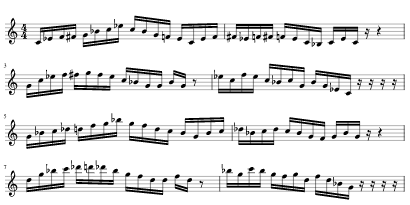
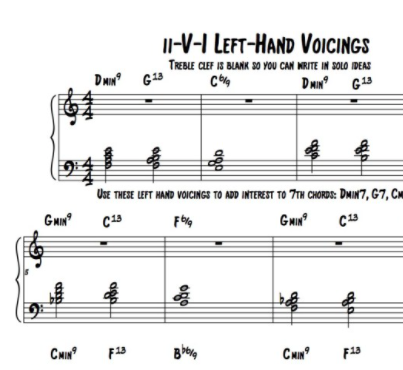
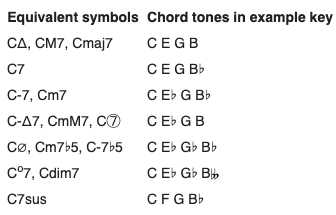
Learn your II- V- I voice patterns as well, by setting up good worksheet exercises and 5 minutes daily of practice on the piano. You can also search books on jazz piano for beginners, o “The Real Book” with all standards known. Don’t forget to Learn Jazz Cycles and The Blues!
The more exercises you perform, the better improvisations you will come with!
*Complete your knowledge on Jazz with the article “A first approach to Jazz piano language“
and the best Jazz pianists of history. And also, do not miss my post about the famous 12 Bar Blues.
Author: Ana Ortiz Wienken
#jazz #jazzpianolessonslondon #jazzpianostyle #styleofpianojazz #jazzcomping #jazzchordsymbols

